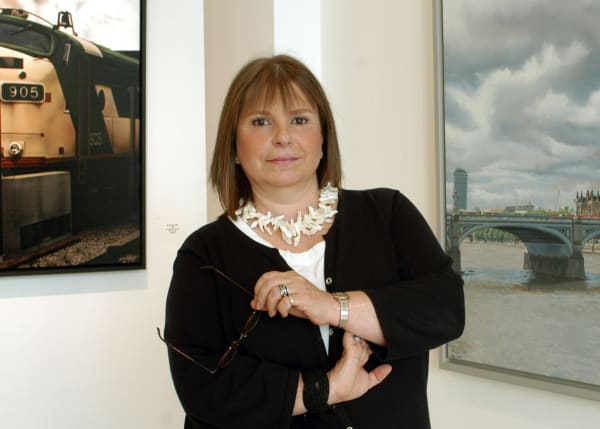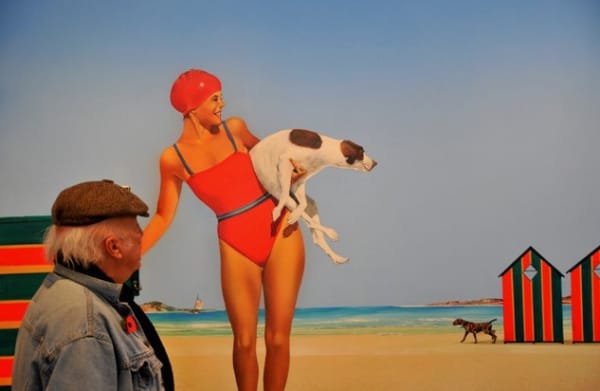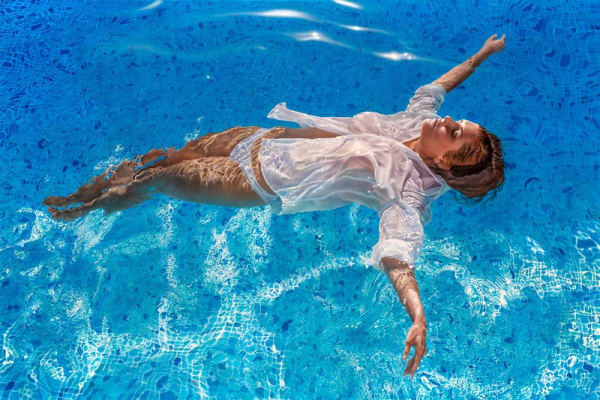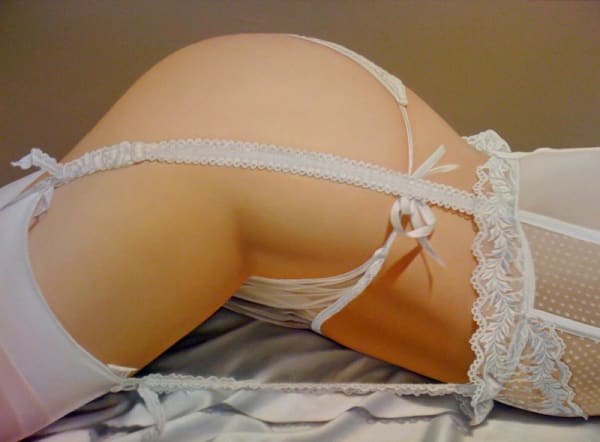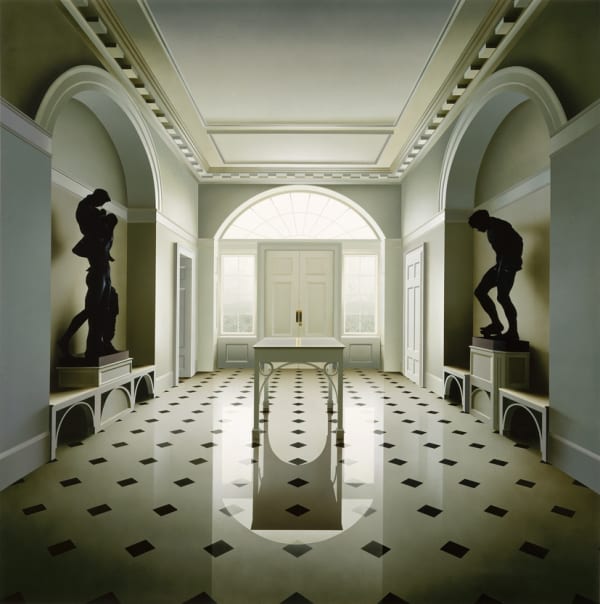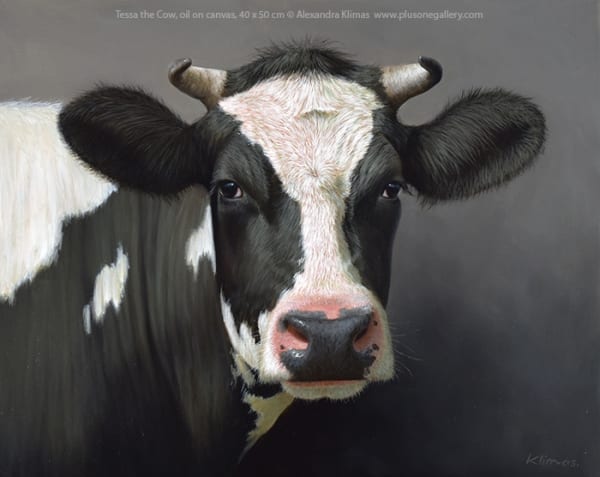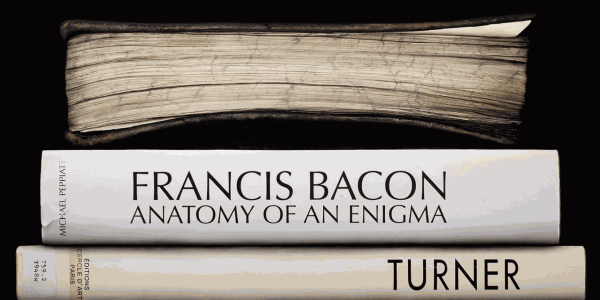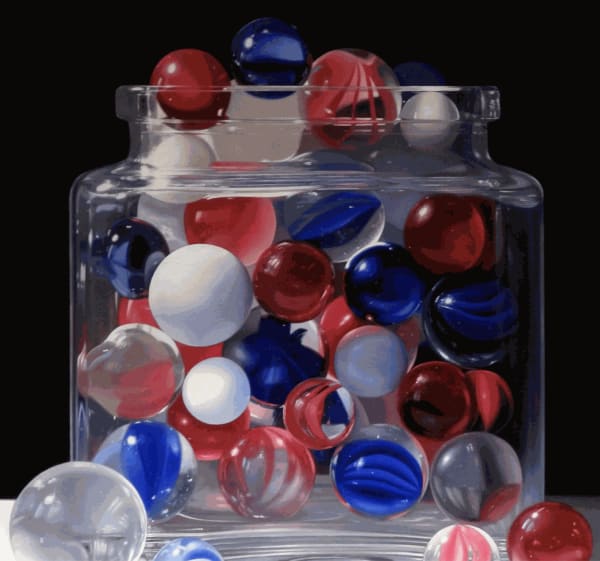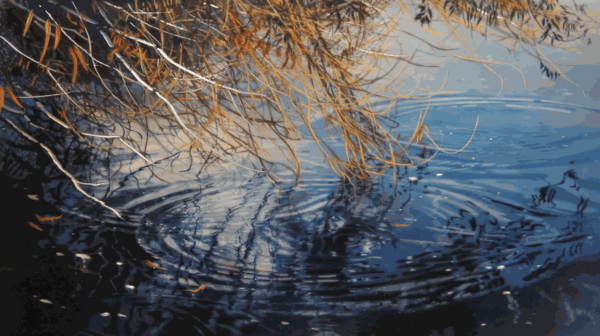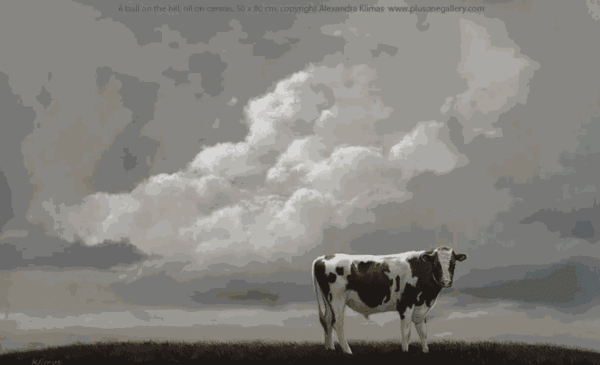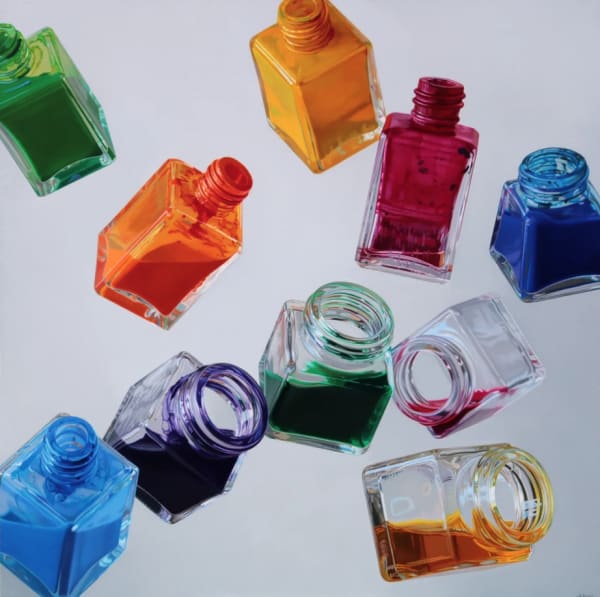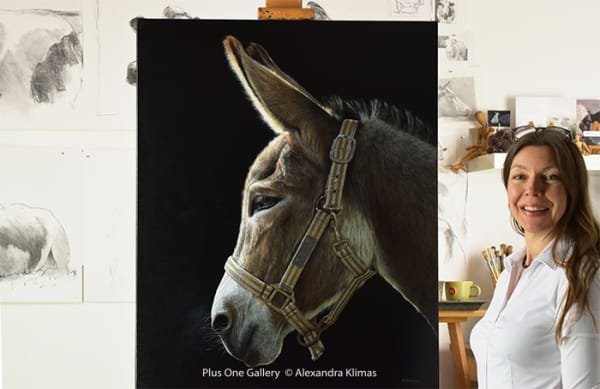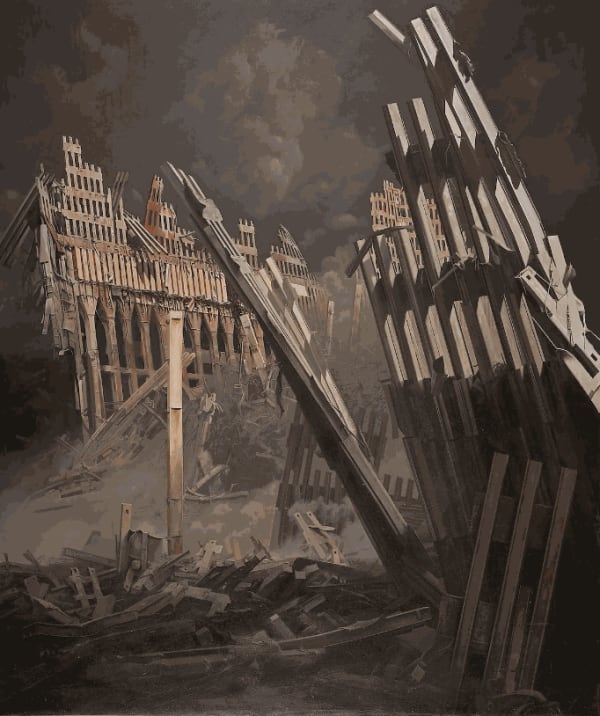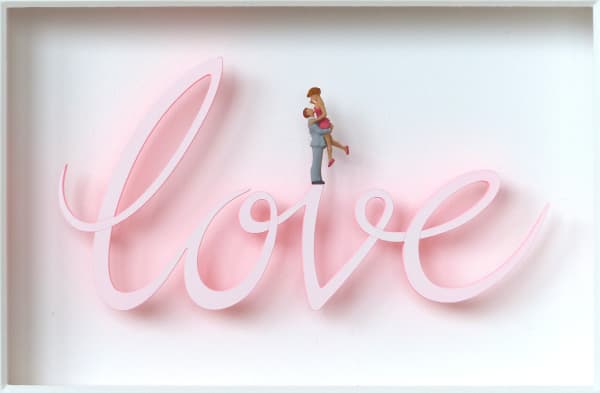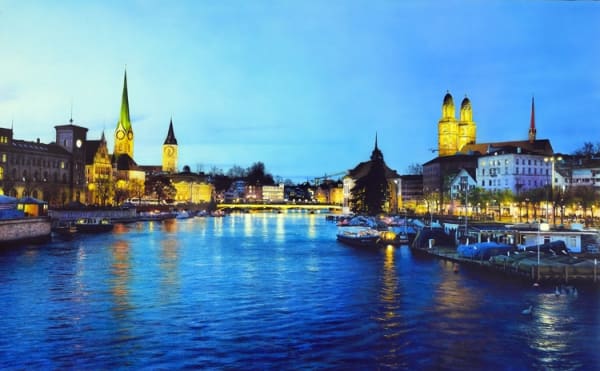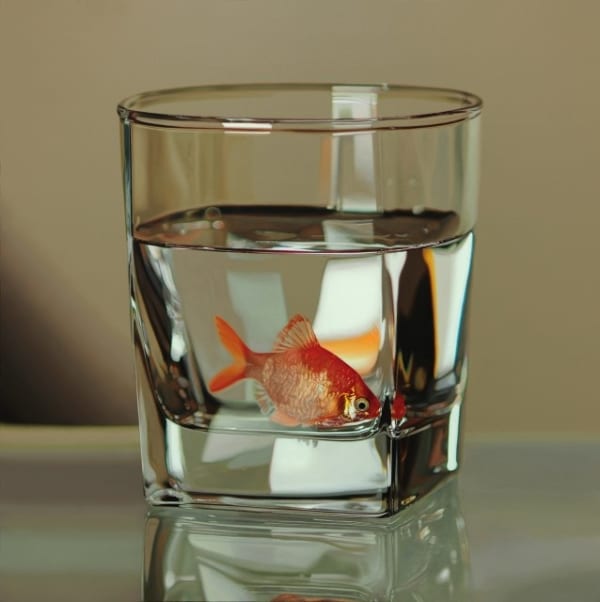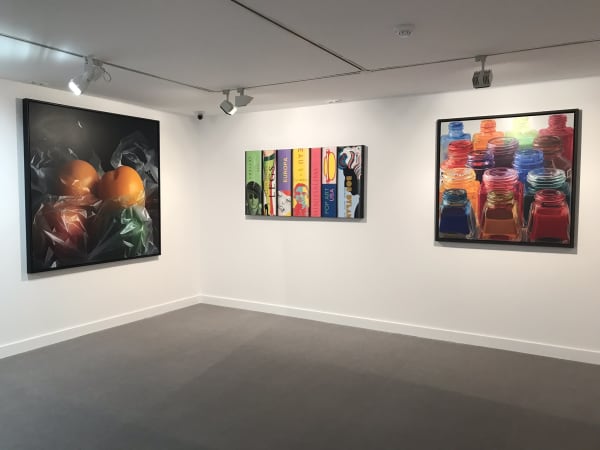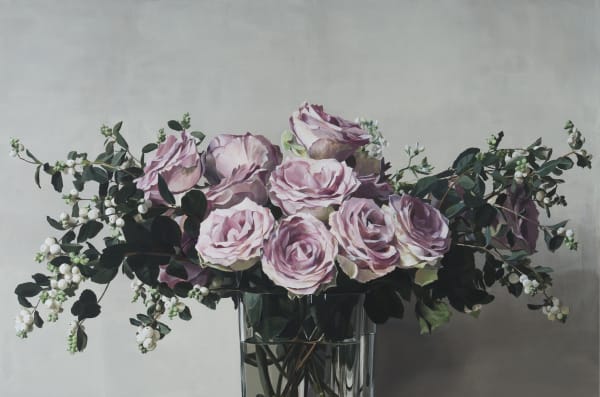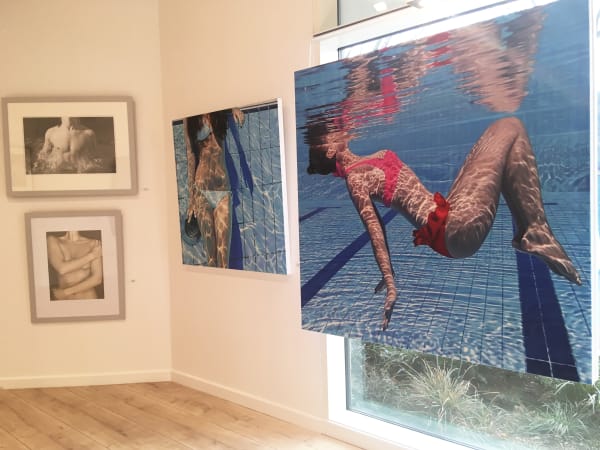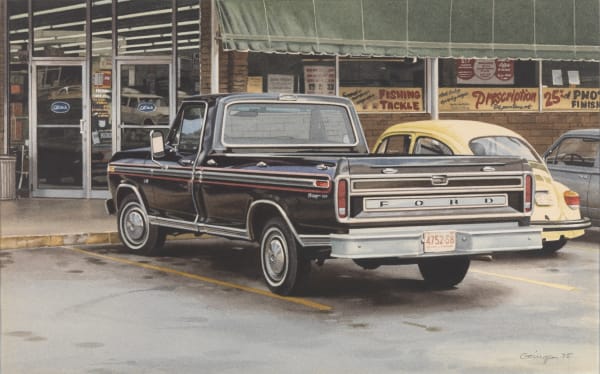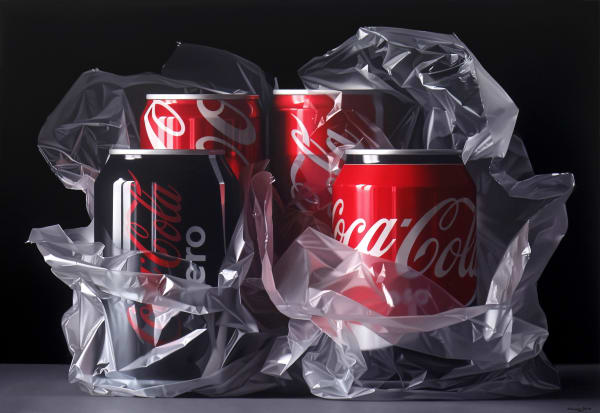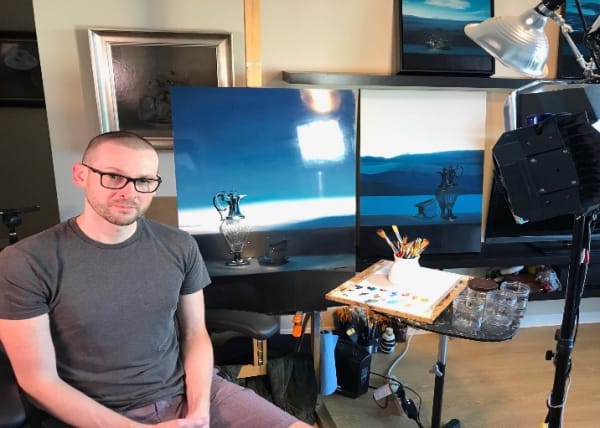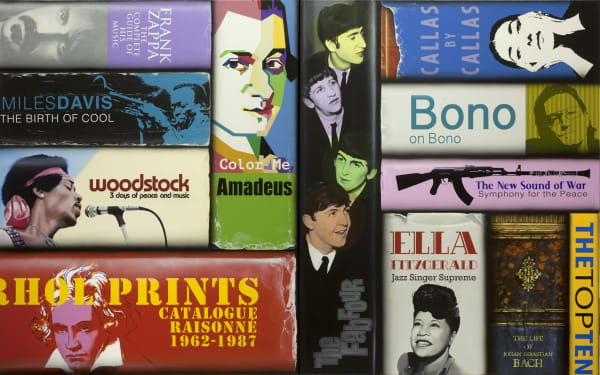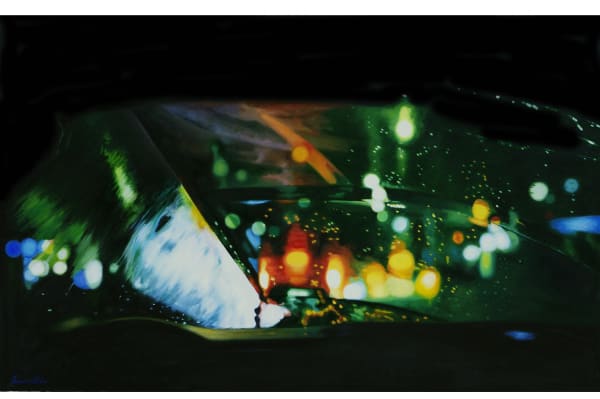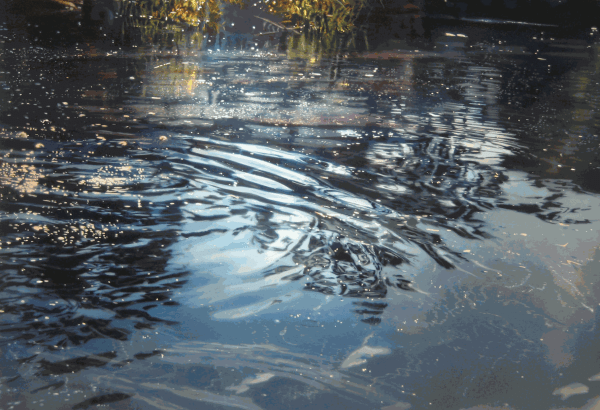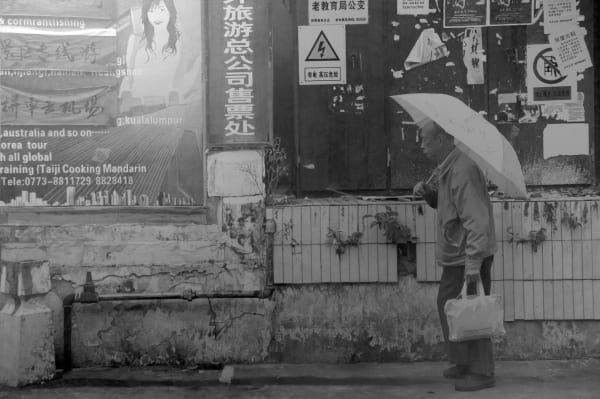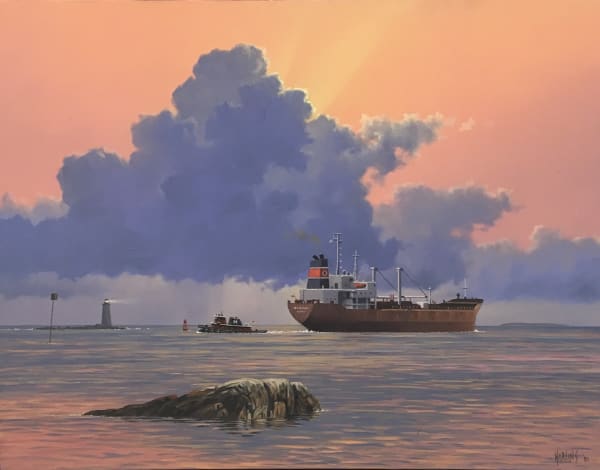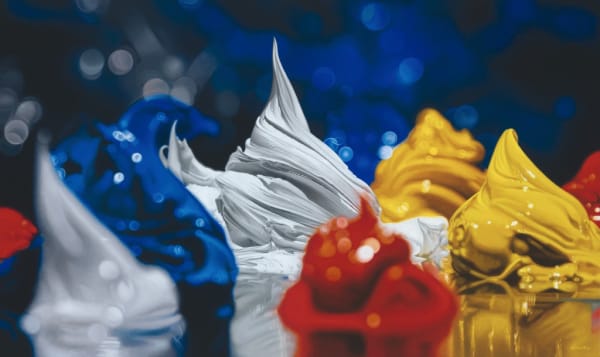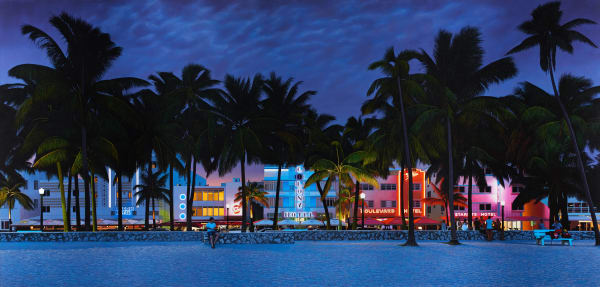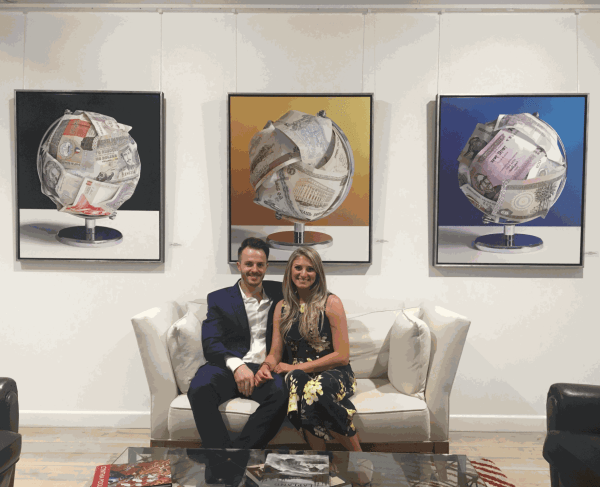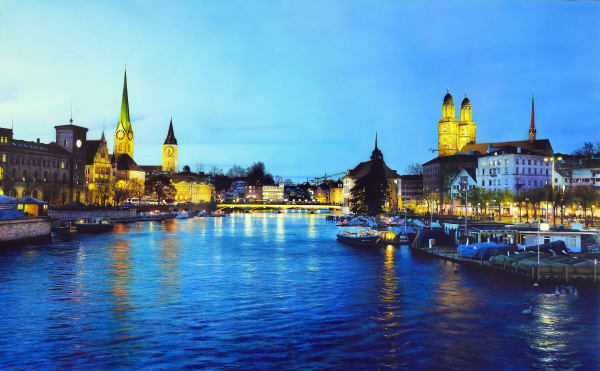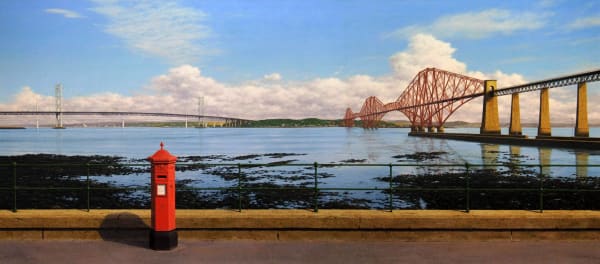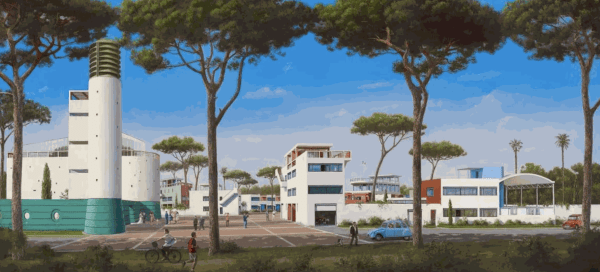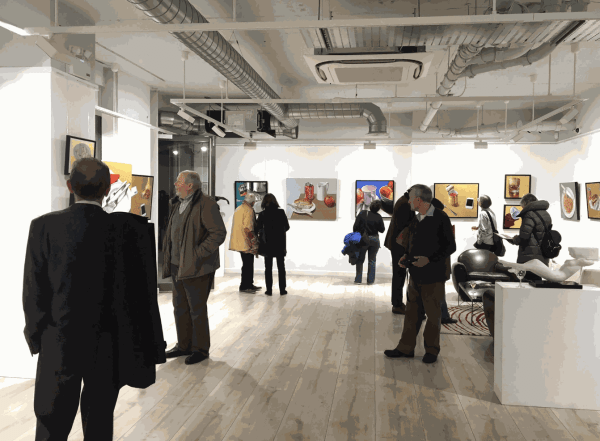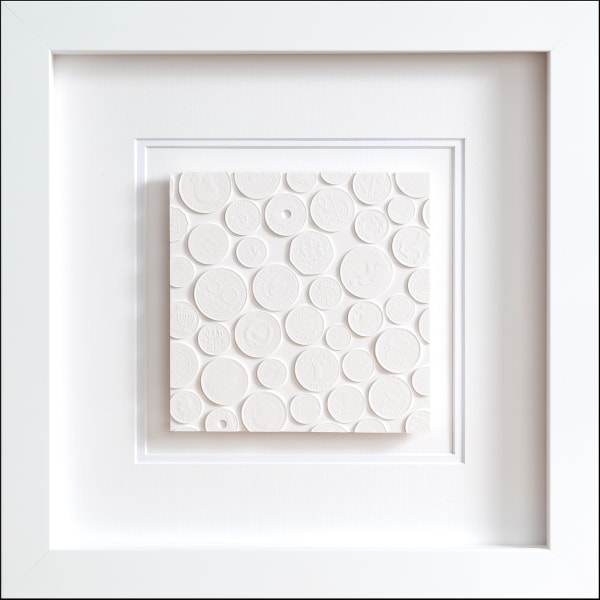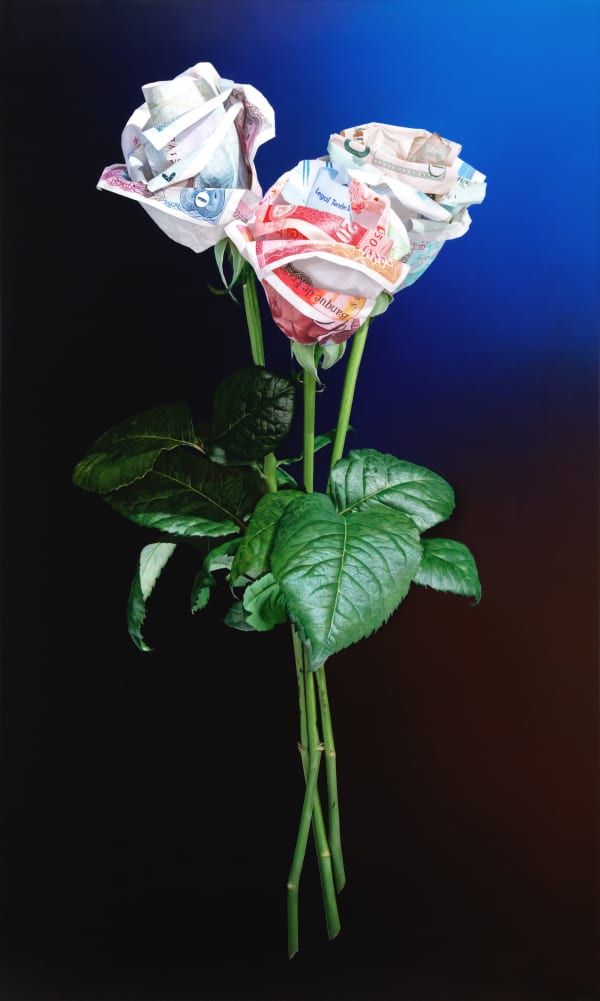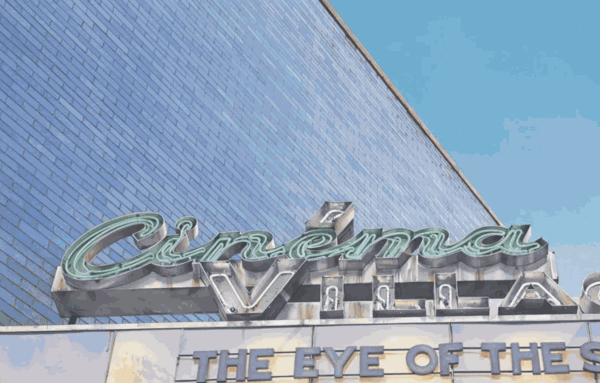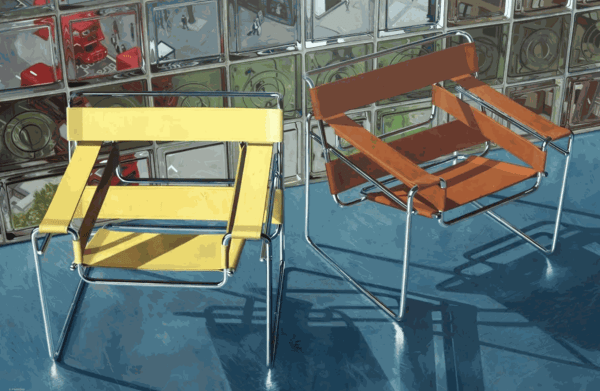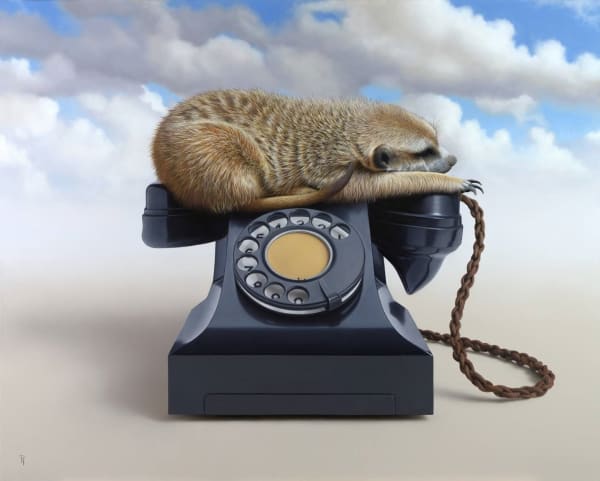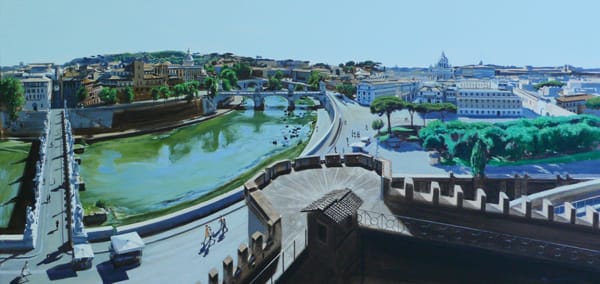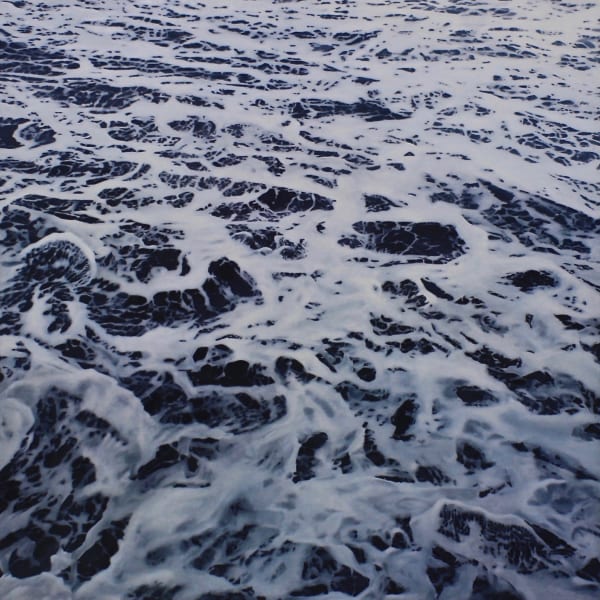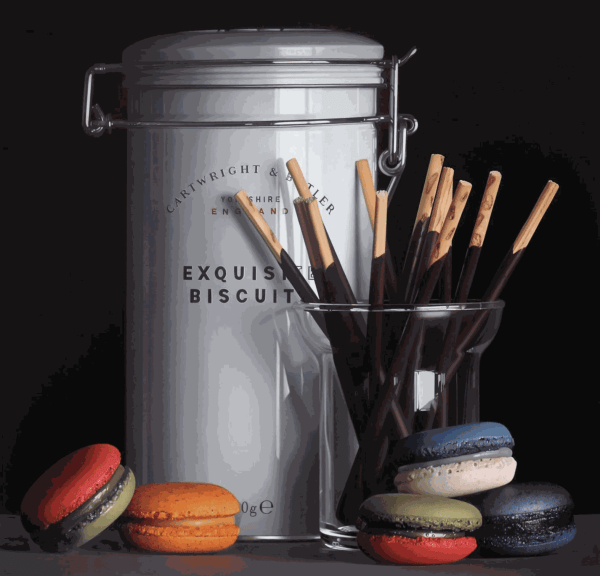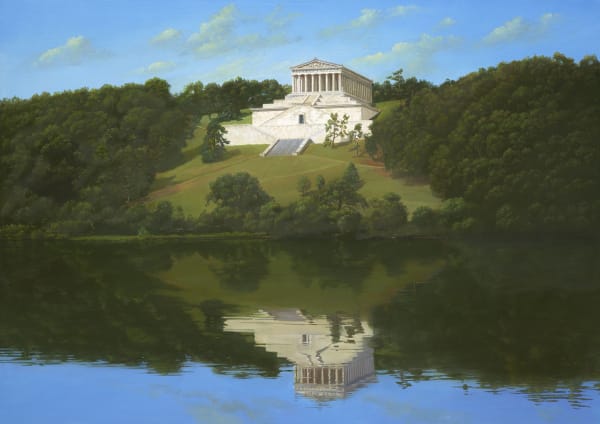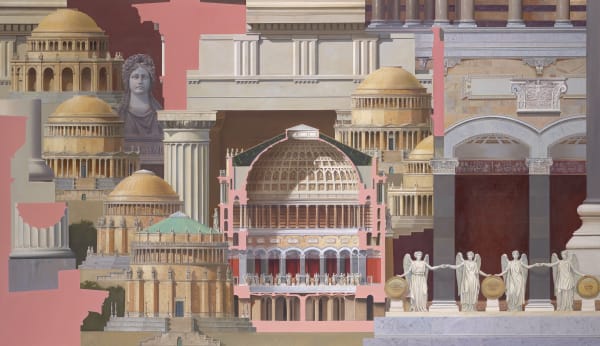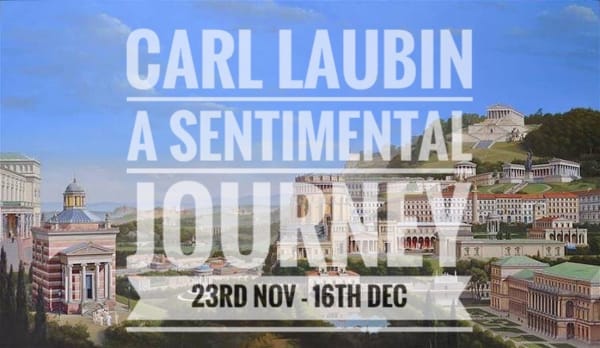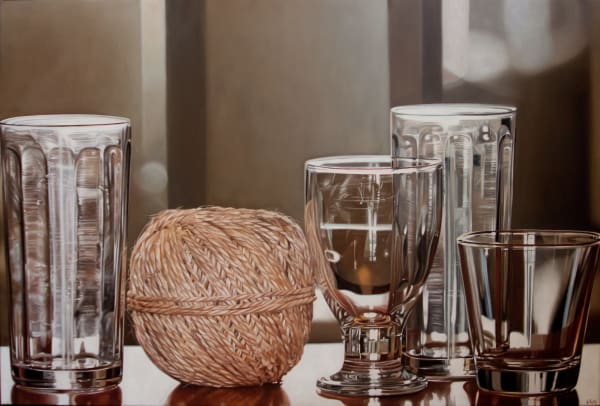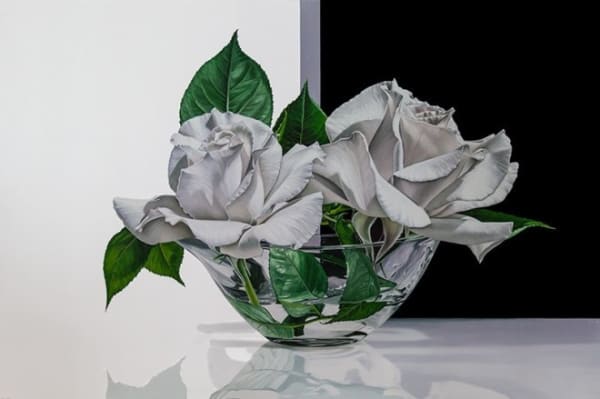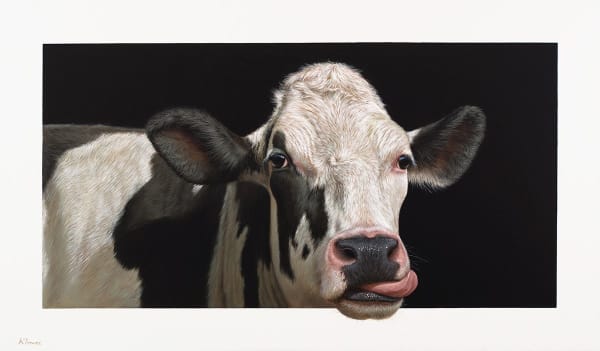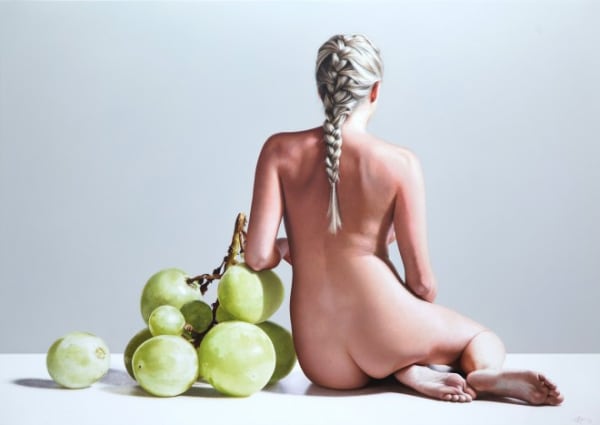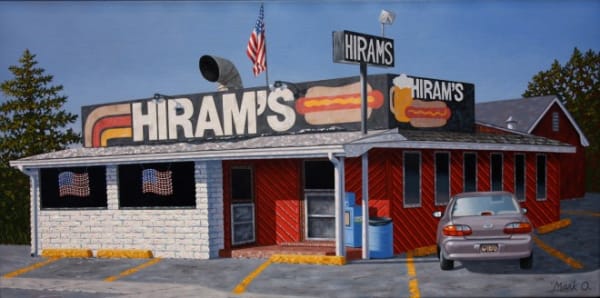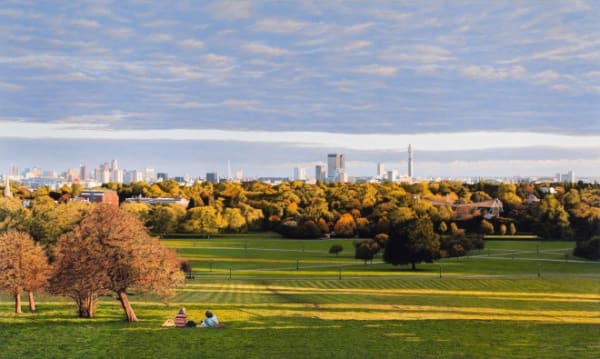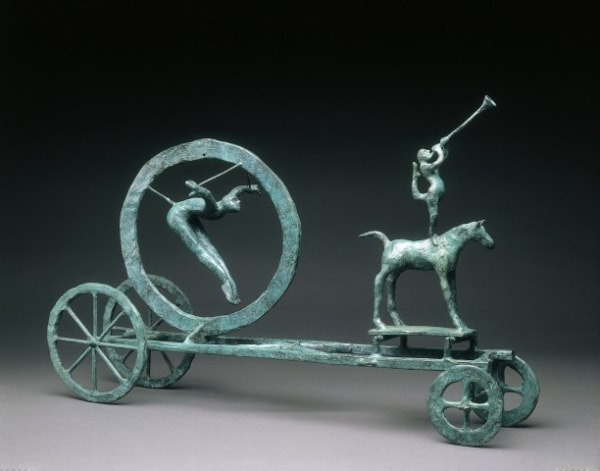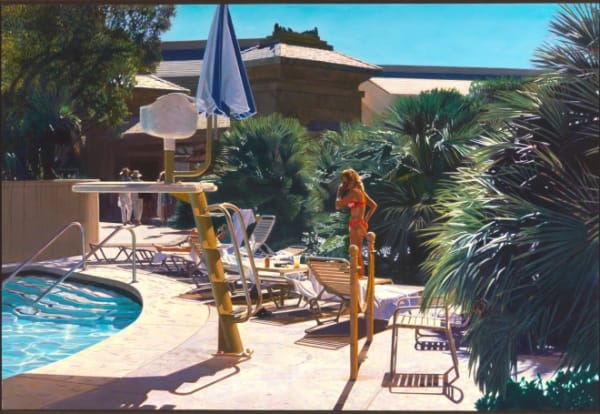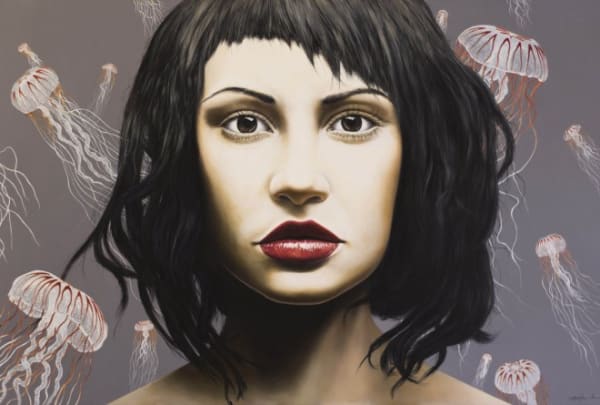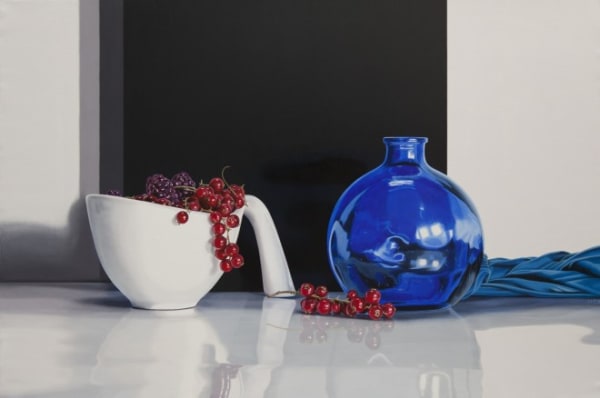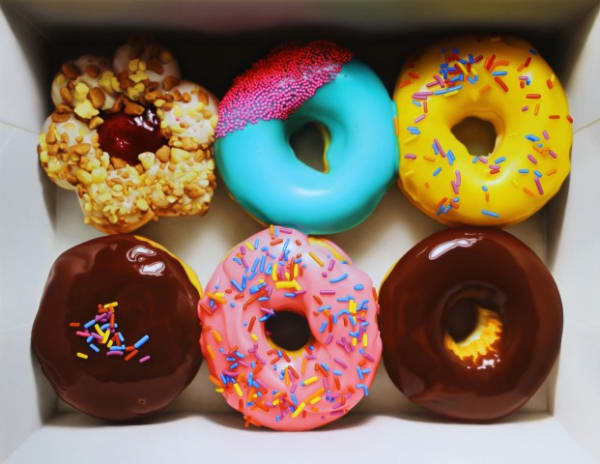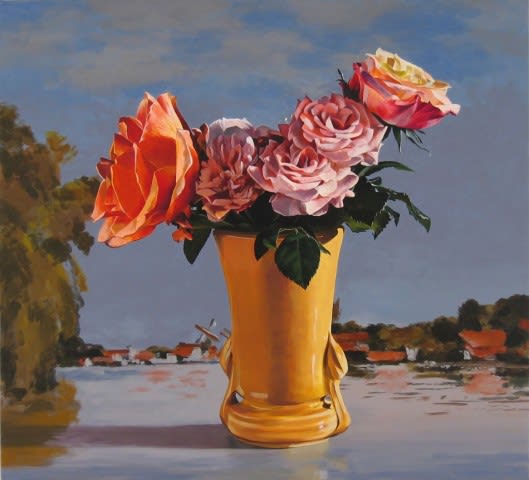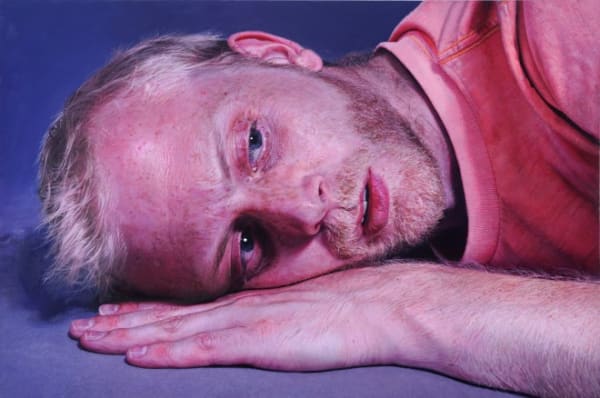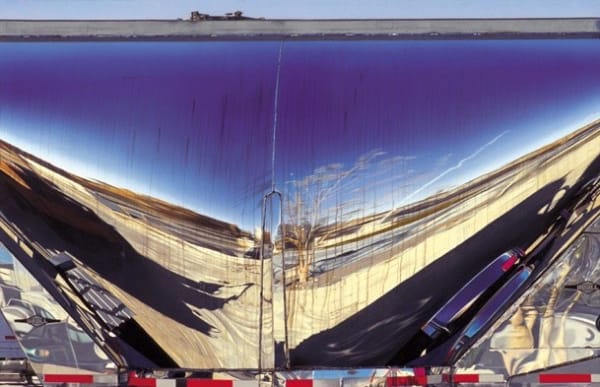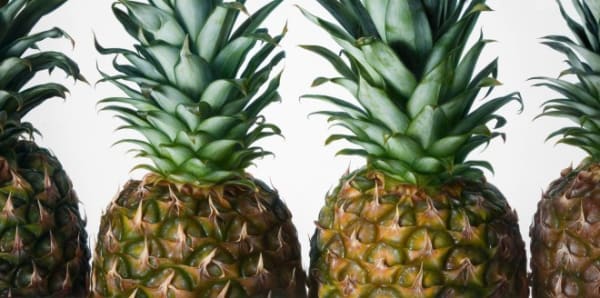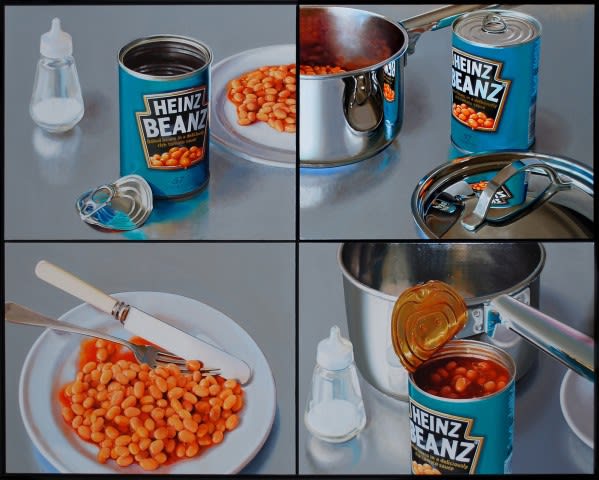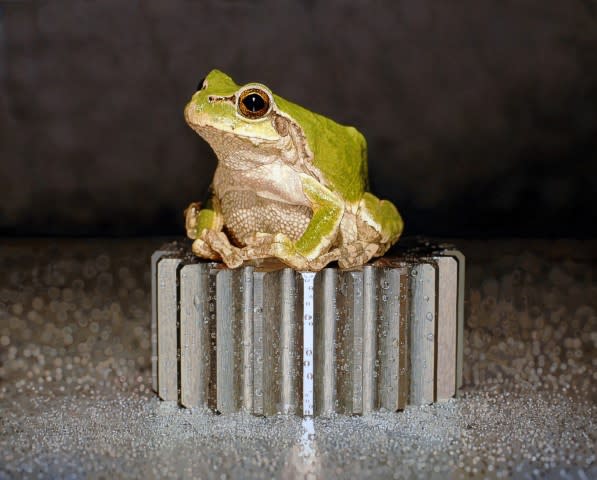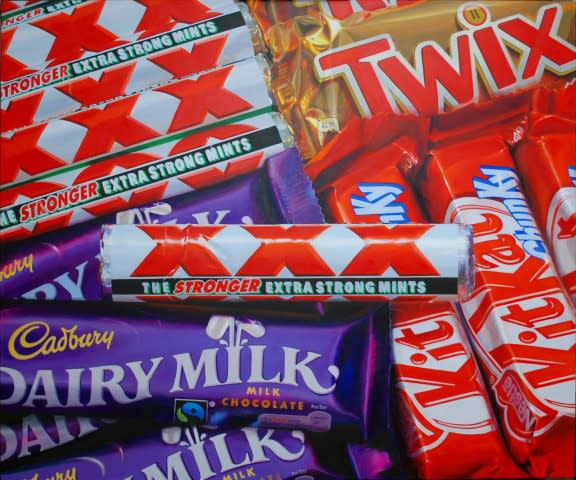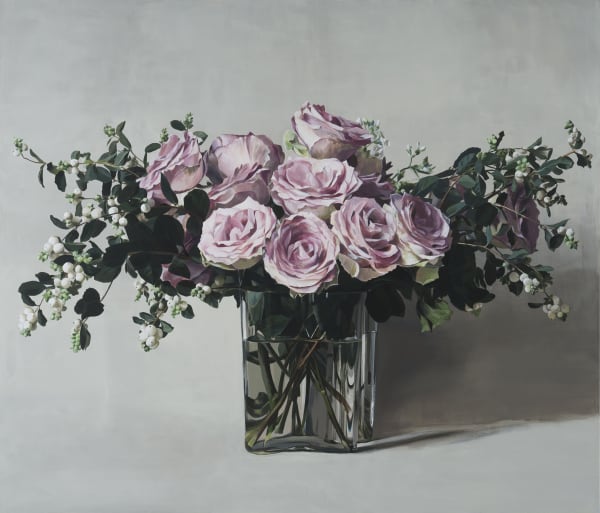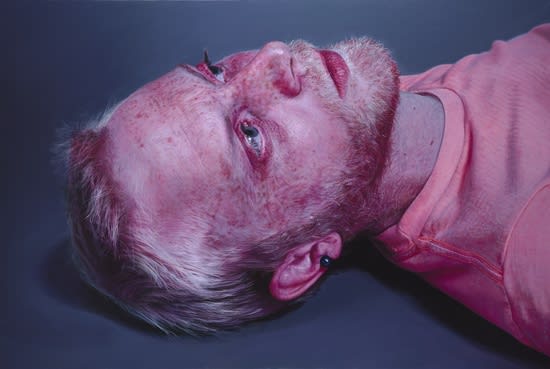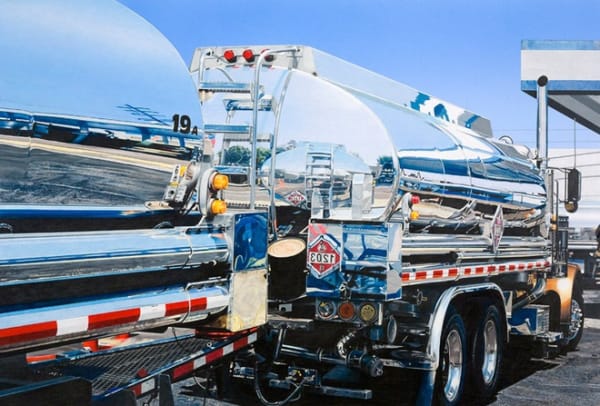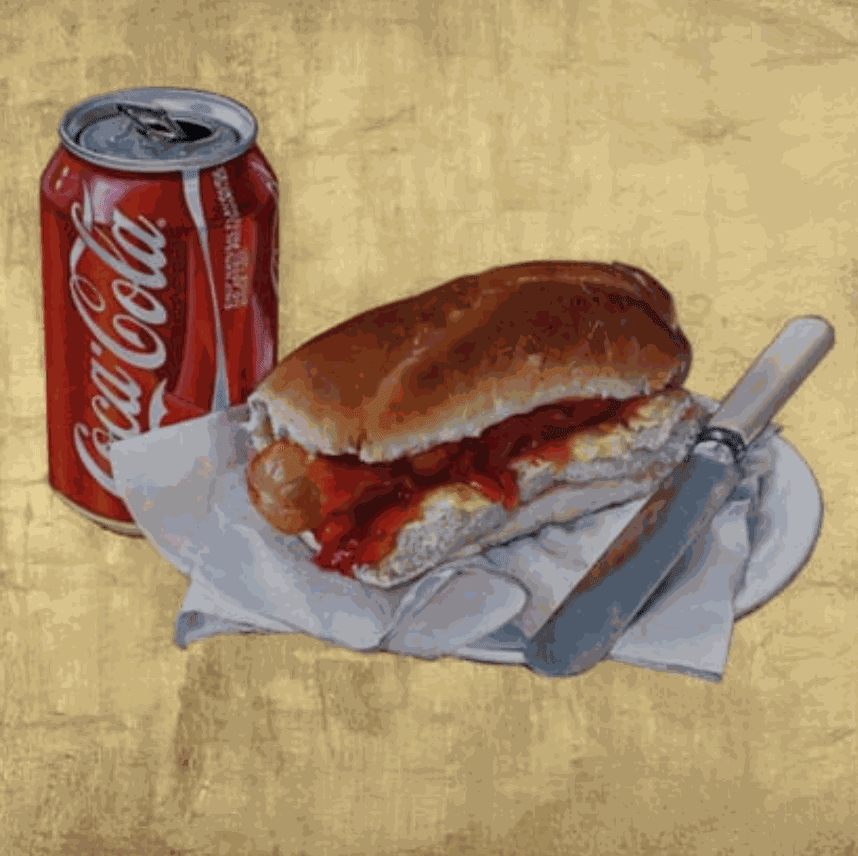
What is your artistic process/ How do you work?
My working method arose partly from having always drawn and painted, and partly from having trained as an architect, and then a long period when I worked as a “3D visualiser” for architectural projects. When I was doing this, photographically convincing images were demanded, and the 3D computer models of buildings that I made had to be montaged into photographs. I became used to working with photographic images and to using the computer to develop visual concepts. In the late 1990s, I began to have time to paint again, fitting it around jobs, and started to compose still life paintings from objects in my own kitchen. I do sketch buildings, people and other subjects, but I am still mainly concerned with still life in the paintings.
Over the years, I have evolved a system which consists of:
- I am always looking for subjects and always carry a notebook and a camera. Walking about in the city is good, so is going to exhibitions and reading newspapers and magazines. I find sitting in cafes good for thinking, sketching and for coming up with an idea.
- Once an idea has been played about with, I look for objects which fit the idea. Once I have them, I set them up and photograph them. I probably take 50-100 shots. Then I look at them all in Photoshop and see if any of them fit the idea I had. I select the shots that do, and work on them on the computer. Usually I find that those shots need to be reshot, and I do a second and perhaps a third shoot, each time selecting and altering the results. Eventually I get two or three possibilities, and choose one.
- Then I print a large black and white version of the image and look to see if it’s any good at that scale. If it is, I go back to the colour image working from that, draw it on canvas and make a painting out of it. There are usually things that don’t work quite as well as I thought, and I alter them as I go. I have the photographs and the objects as reference when I work.
- I have used mainly acrylics for some time, and I use brushes. I have tried the airbrush, but its hands-off feel is unappealing. In this highly realistic style, the paint is used thin so that the mark of the brush is limited and subordinate to the image. Recently I have experimented with letting the character of the brush show through a little.
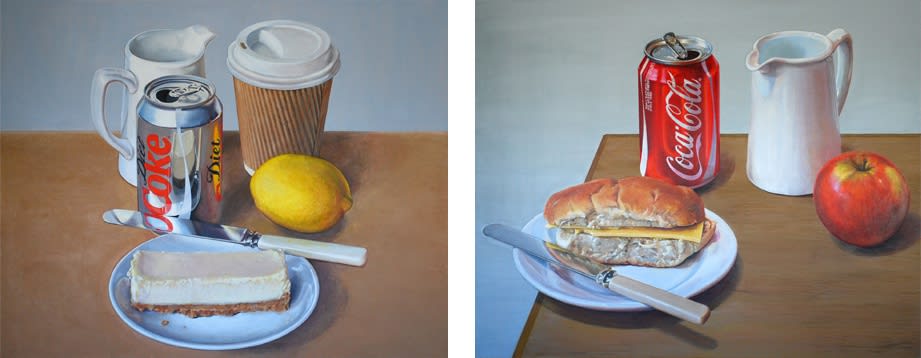
'Deliberate Arrangements I', 80 x 100 cm, 2014, Acrylic on canvas
'Deliberate Arrangements II', 80 x 100 cm, 2015, Acrylic on canvas
Has your work changed since your early days? How has your work evolved?
My interest is in everyday contemporary things and in the composition of a picture. Always has been, I think. When I started painting again (hadn’t had time to do much except sketch for years) I was just looking at simple things that I owned already. Now I go out searching for the exact object I need. I am still extremely interested in geometry and composition, but I am more influenced by other painters now, I think, than I used to be.
When did you start exhibiting with Plus One Gallery? Has this relationship influenced your artistic development?
I met Maggie in the early 2000s when Plus one was in the Marylebone area. I had accumulated a number of my own paintings, without really thinking about selling, and Plus One gave me a show in 2004. I have been exhibiting with them ever since.
When we met, Plus One was already starting to specialise in Hyperrealism, so I saw many examples which stimulated me to experiment, and yes, my work was looser before I started exhibiting with Plus One. Seeing the work of the gallery artists and using some techniques closer to theirs has been a useful discipline, and has expanded my understanding of the possibilities of high realism. I came across the work of Ben Schonzeit at Plus One Gallery, and many of the things he has explored in his work over the years appeal to me – the use of collage, the references to historical painting, some responses to Surrealism, for example. Other painters represented by the gallery have inspirational technical skills.
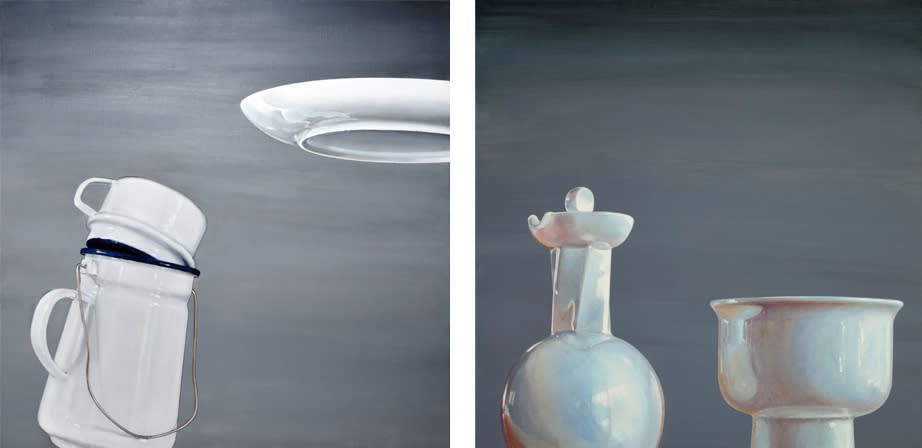
'Metafisica II', 76 x 76 cm, 2016, Acrylic on canvas
'Metafisica I', 76 x 76 cm, 2015, Acrylic on canvas
Who is your favourite artist and why?
Not sure I have a single favourite artist. I love Piero della Francesca, Jan Vermeer, Frans Hals, Vilhelm Hammershoi, Morandi, de Chirico, Wayne Thiebaud and the Dutch still life painters. For still life, probably Wayne Thiebaud, whose handling of paint is extraordinarily wonderful. At the moment, I am looking at Morandi, and perhaps a bit at de Chirico’s metaphysical paintings. Morandi was briefly a metaphysical painter too, and there is an overlap in attitude between the two of them.
You began your career as an architect, how has this influenced your practice?
When I began painting still life, I had recently finished a Ph.D on some early works by the architect Le Corbusier. I had pursued that partly because Le Corbusier had an obsession with how to arrange things visually in space that persisted throughout his career. He made up rules for it, and even produced a measuring system (The Modular) to control the proportions of his buildings. When I studied architecture, my biggest question was probably how does one organise the building aesthetically once the practical functioning has been solved? You try things out, but proportional systems are useful and so are rules. Having an opinion about architecture, then art and pictures which develops over the years, also feeds in.
What made you decide painting was where your main passion lay rather than architecture?
I didn’t set out to be an architect. I have always drawn and made things, and assumed I would do this as an adult. My parents didn’t think there was a living to be made in art, and persuaded me that architecture was a better path. Plus, I’m not sure there was an art school in Zimbabwe at the time. Architecture is interesting too, and my father, who was a mechanical engineer on the railways, had once been a railway draftsman, and still drew things on his drafting board when I was growing up, so I assumed I could do that too.
What influence do you feel your childhood in Zimbabwe has had on your artistic practice and your view of London?
Not sure. From the time, I was a teenager, I wanted to go “overseas”, as we called it and that meant London. I grew up in a series of small towns, we moved a lot and the options for someone there who was seriously interested in European art & architecture were limited. Those were still colonial times. I left before Zimbabwean independence and I was educated under a British system which did not incorporate local traditions or languages, which was a great lack. The literature and magazines we had were mainly from England, so I grew up knowing about things I’d never seen. Snow, for example, red Squirrels and the Blitz.
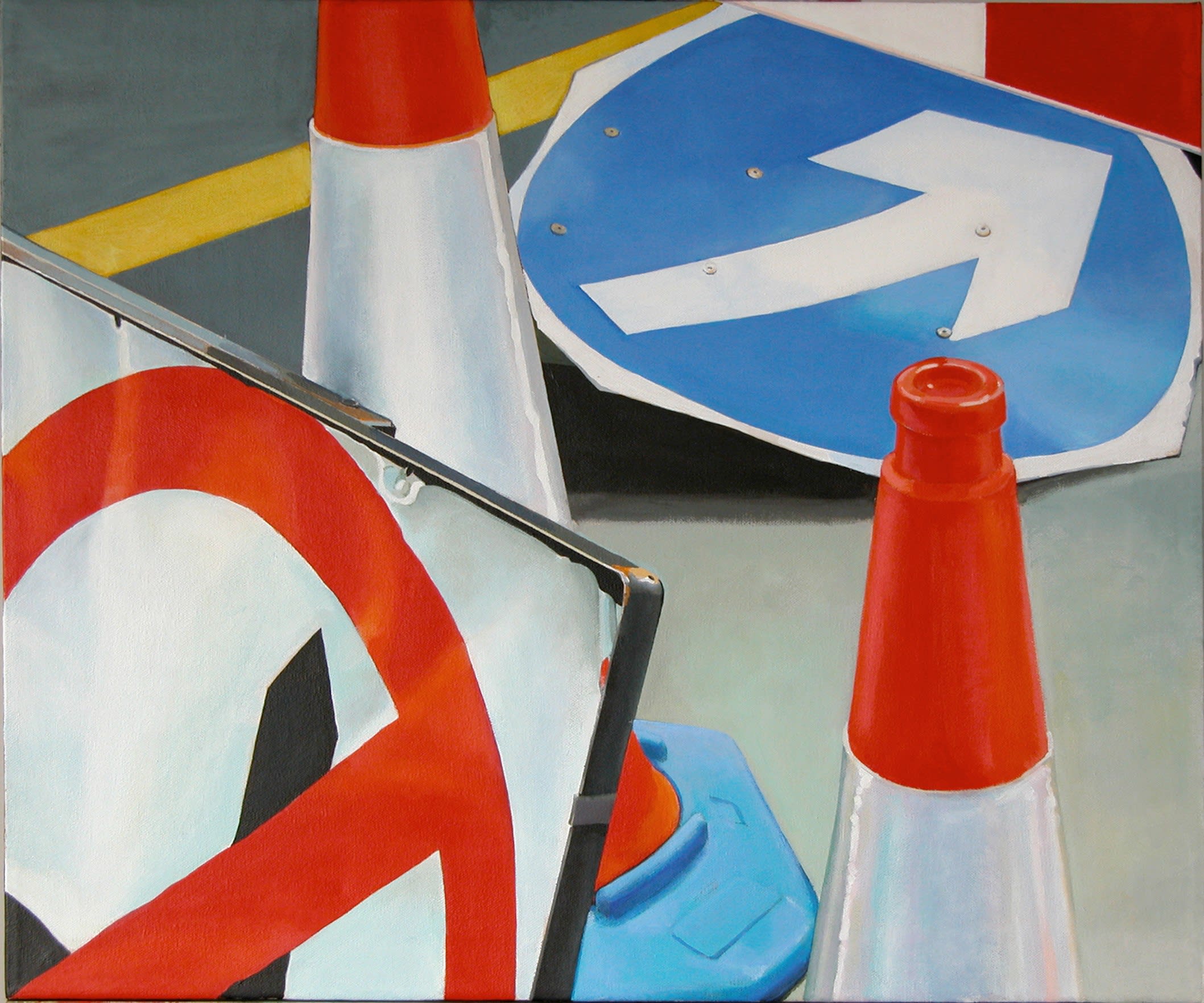
'Roadworks I', 66.5 x 82 cm, Acrylic on canvas
Your paintings have a clear connection to Pop Art. You portray well-known iconography within your work such as tins of Heinz beans and Sarson’s vinegar bottles. Is this connection intentional or is this something you are interested in on another level?
Oh yes, it’s intentional! Pop Art still feels like a fresh way of looking at things to me. It sort of followed Abstract Expressionism, I think, a long period where the object was lost. Partly I am fascinated by objects with writing on them, and the way our world is full of them. Also, many of the most famous brands have iconography that is surprisingly old. So, at once they stand out and they are in the background because they are so familiar. The text recedes and advances. It is part of the composition and it is subsidiary to the visual arrangement of things as well, the brands are competitive, both visually and in the real world. In a newsagent’s display of chocolate bars, they are all shouting to be bought. Changes to the designs are interesting too. There are a lot of changes. When I used to photograph vending machines, I learnt to buy the bars in the photographs at once, because in a few weeks, the packaging was likely to have changed.
You have said that you think Le Corbusier “is much underrated as a painter of still life”, what have you learnt from him and what have you applied to your own compositions?
I’ve mentioned Le Corbusier before. He trained as a decorative artist and was largely self-taught as an architect. He was in Paris from about 1908, just when there was a great explosion of new art. While he was designing his first modern buildings, he and Amedee Ozenfant responded to Cubism by forming their own art movement, “Purism”, and as with other new art movements at that time, wrote their own manifesto. Purism had an emphasis on returning to nature and to the essential object; the “object-type”, which can stand in for all objects of its kind. I still look for type objects! There was of course a big overlap with his architectural ideas about proportion, banishing ornament, and about composition. Once Corbusier was an established architect, he painted in the mornings and went to his studio in the afternoons. This dual career doesn’t really fit with the general view of the lone artist, and I think this is partly why his art is not very appreciated. But he was also a very good architect, so perhaps the buildings overshadowed the art.
Your latest paintings have been heavily influenced by the work of Giorgio Morandi. Can you tell us about his influence and what led you to this series?
For me, the most striking thing about Morandi’s still life paintings are the way they look as if they might be landscapes, or buildings, or people on the shore. This is partly because he often uses a very elevational view, and partly because the dusty colours have a vagueness that lets in various interpretations. The compositional techniques that interest me are his habit of clustering everything in the centre of an empty plane, or shore, or alternately, arranging the objects in a row, parallel to the picture plane. Sometimes he allows the side edge of the table to appear, thus fixing the scene as a still life; in these cases, objects may be balanced precariously on the edge. I explored these aspects but with my own choice of contemporary objects.

'Place Setting I', 91 x 91 cm, 2014, Acrylic on gessoed board with gold leaf
'Place Setting II', 91 x 91 cm, 2014, Acrylic on gessoed board with gold leaf
These paintings continue to feature contemporary everyday objects but the geometrical relationships included in your previous still lifes are no longer present. Giorgio Morandi’s influence has allowed a more fluid compositional aspect. Would you agree?
Not really. I probably spend more time composing a scene than painting it. Some of these paintings have been around in idea form for several years. It often takes a while before I come up with a convincing way to configure an idea, drawing it again and again. The relationship between objects, especially when they are few is crucial. So is the relationship of object and picture-plane edge. The geometry is not necessarily apparent in the finished work, but there are often underlying Golden Sections etc. reinforcing what I consider to be significant points.
The paintings in your ‘Solitude’ series are abstract in composition yet hold strong narrative qualities. Can you explain your ideas behind these juxtaposing components?
I think the compositional approach is much the same as previously. I have completed a few narrative paintings before, and it’s interesting now to see what can be implied with a very few objects. I have long been interested in incorporating contemporary objects and the mobile phone has become ubiquitous in my lifetime. It’s particularly interesting when it represents, as here, an inactive but possible link to the outside world. In this series, there is the blank phone and the other objects which have, I suppose, a more homely, old fashioned quality are simple things that haven’t changed much for many years.

'Solitude II', 76 x 61 cm, 2015, Acrylic on canvas with gold leaf
'Solitude I', 76 x 61 cm, 2015, Acrylic on canvas with gold leaf
‘Extremadura’ pays homage to Francisco De Zurbaran’s famous painting ‘A Cup of Water and a Rose’ which is thought to symbolize the Virgin Mary and the halo around the candleflame in ‘Solitude II’ also holds religious connotations. Is religion an area you plan on exploring further?
In a way, yes. But that is partly because of the historic use of gold leaf in a context of worship, so it’s almost inevitable that any response to this tradition would acknowledge this. The Gold Leaf works are very experimental and are reminiscent of both religious and Medieval paintings. The combination of the Gold Leaf and the contemporary objects creates an interesting conversation.
What inspired you to merge the two?
I look at a lot of art. The National Gallery has the most extraordinary collection of Medieval paintings, and as with Morandi, I became interested in the contemporary possibilities. In a secular world, though, there is the opportunity to contrast the precious gold with ordinary things. I saw a lot of Klimt paintings in Vienna when I was there and wondered (going back to Le Corbusier, who eschewed decoration), if the gold leaf could be used in a more austere way. Then I started looking out for modern examples of using gold or metal and there are all kinds of interesting uses, for example in some Rauschenberg collages or Pistoletto’s shiny steel panels with figures painted on them, where the viewer becomes incorporated. I started collecting instances of modern usages!
Pop Art tends to examine modern societies devotion to mass-produced products, this was an almost religious practice. Do you believe your previous and most recent paintings are inextricably linked to religion or are your new works connected in a more authentic way?
I don’t really know. I grew up in a devout household, so although my attitudes are secular – I think – I am thoroughly versed in the stories and beliefs that produced all that religious art. I refer to it, definitely, but also generally to the European/ (& modern) USA traditions. In the end, I am always looking to see what things make when they are put together. It’s partly composition, partly the particular-ness of the chosen object, and of course there may be an underlying reference to history, religion, etc. It’s not always that conscious.



